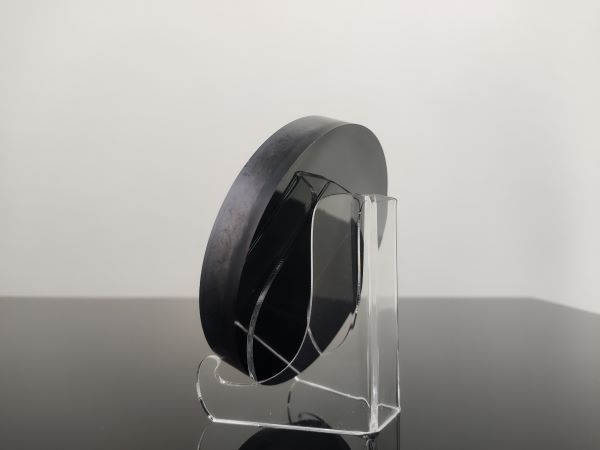
Silicon carbide (SiC) is prized for its exceptional properties, finding extensive use across high-tech sectors. Polishing SiC ingots enhances their performance, serving as a crucial step in various applications. Here, we explore why polishing is essential and the direct applications of polished SiC ingots.
Reasons for Polishing SiC Ingots
1. Surface Enhancement
Defect Removal: Polishing eliminates micro-cracks and scratches from cutting and grinding, ensuring a smoother surface and enhancing material strength.
Roughness Reduction: Polished surfaces exhibit reduced roughness, vital for applications requiring high surface finish such as optical components and semiconductor devices.
2. Optimizing Device Performance
Scattering Reduction: Polishing minimizes surface scattering, enhancing the efficiency and performance of power and high-frequency electronic devices.
Interface Improvement: Smooth surfaces improve interface quality, reducing defects and enhancing electrical performance.
3. Mechanical Strength
Enhanced Durability: Polishing reduces stress concentration points, enhancing mechanical strength and durability, crucial for components like mechanical seals.
Crack Prevention: By eliminating micro-cracks, polishing mitigates stress corrosion cracking, prolonging the material lifespan.
4. Optical and Semiconductor Uses
Transmittance Improvement: Polishing reduces light scattering and absorption, improving optical transmittance.
Defect Minimization: Lower defect density on polished surfaces enhances semiconductor device yield and performance.
5. Chemical Stability
Oxidation Prevention: Polishing reduces active surface areas, minimizing oxidation and contamination risks, especially in harsh environments.

Direct Applications of Polished SiC Ingots
1. Heating Elements
Electric Heating Rods: Widely used in industrial heating for ceramics, glass, and metals due to high-temperature stability.
2. High-Temperature Furnace Components
Tubes and Crucibles: Critical components in high-temperature furnaces for thermal treatment of metals and ceramics.
3. Mechanical Seals
Sealing Rings and Bearings: Offer high wear and corrosion resistance, ideal for petroleum and chemical equipment.
4. Wear-Resistant Parts
Nozzles and Valves: Used in sandblasting, spraying, and chemical equipment for extended lifespan.
5. Heat Exchangers
High-Temperature: Suitable for corrosive environments, providing efficient heat exchange for gases and liquids.
6. Fiber-Reinforced Composites
Reinforcing Fibers: Provide high-strength components for aerospace and defense applications.
7. Semiconductor Wafer Substrates
Wafer Growth: Crucial for fabricating power semiconductor devices.
8. Sensors and Measurement Devices
Thermocouple Protection Tubes: Ensure accurate temperature measurement in metallurgy and kiln industries.
9. High-Voltage Insulators
Power Equipment Insulators: Essential for high-voltage transmission lines and substations.
10. Optical Components
Infrared Windows: Used in high-temperature and corrosive environments for infrared optical systems.
11. Research Equipment
Laboratory Tools: Maintain performance under extreme conditions for research purposes.
Conclusion
Polishing SiC ingots enhances their suitability for various high-tech applications, including heating, sealing, and optical systems. With continuous advancements, SiC ingots will continue to play a pivotal role across diverse industries.
Related product links
Silicon Carbide Wafer (SiC Wafer)
As semiconductor technology advances, Gallium Nitride (GaN) has become a core material in optoelectronics, rad...
With the rapid advancement of third-generation semiconductor technologies, Silicon Carbide (SiC) has emerged a...
As third-generation semiconductor materials such as silicon carbide (SiC) and gallium nitride (GaN) continue t...
